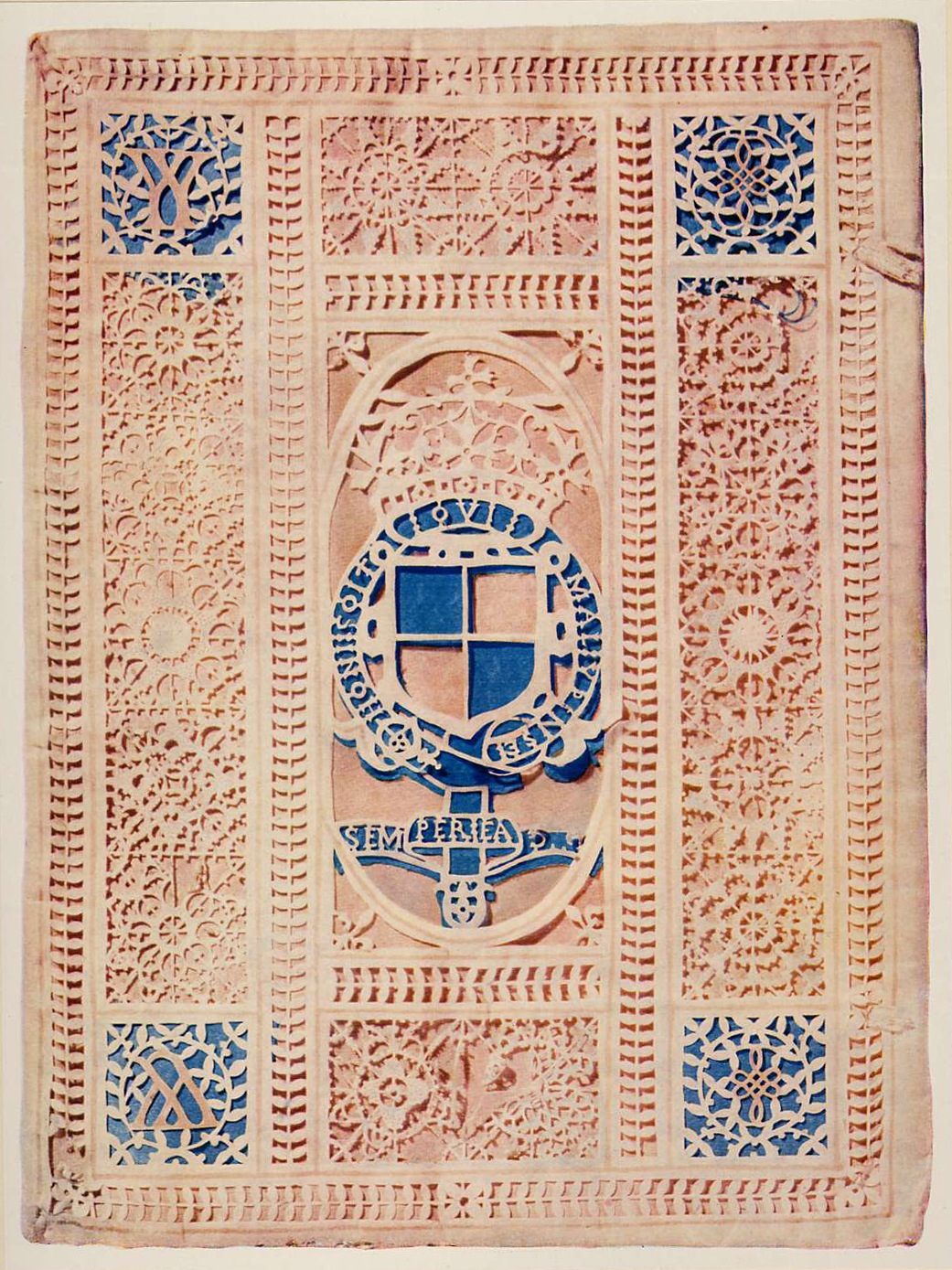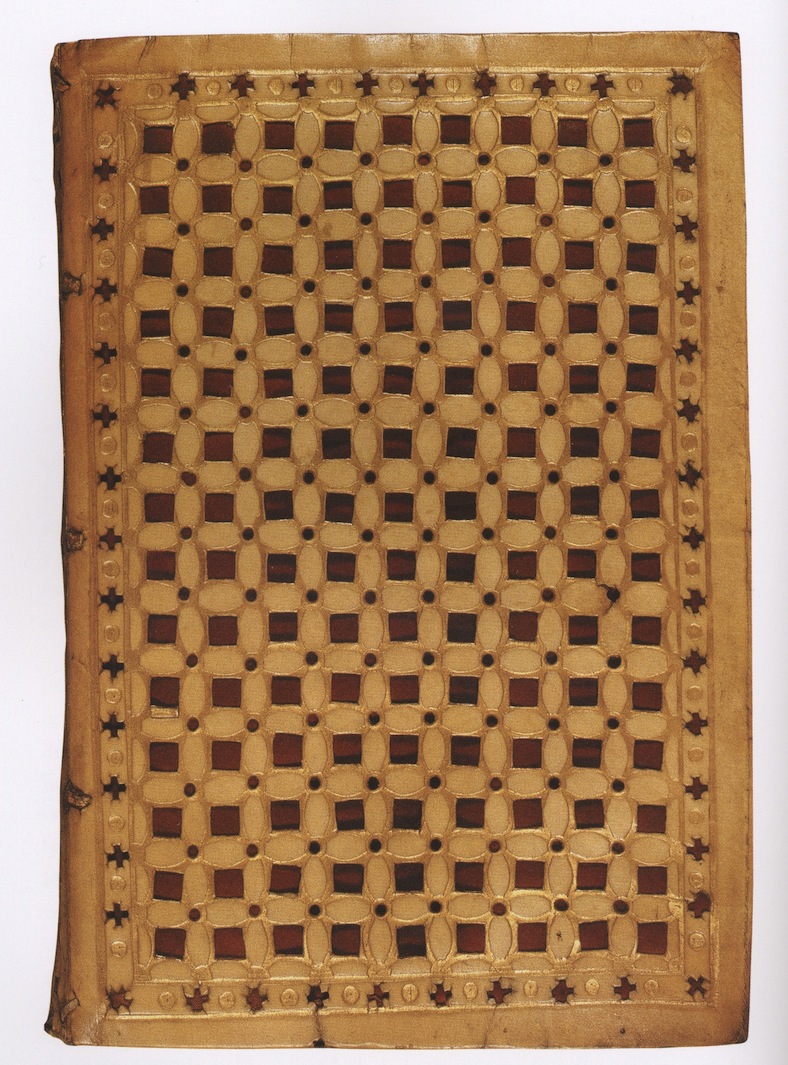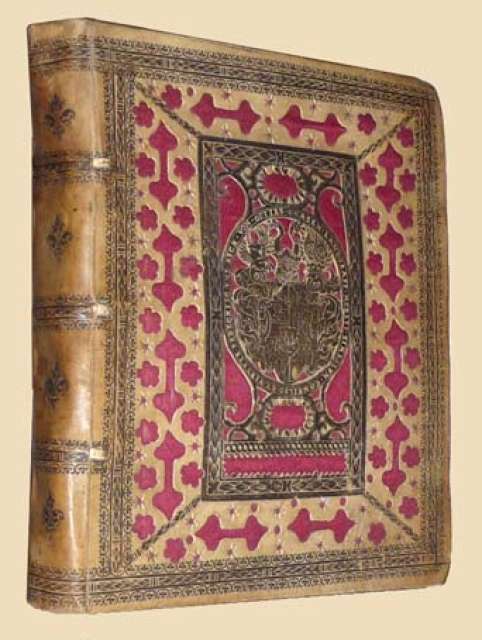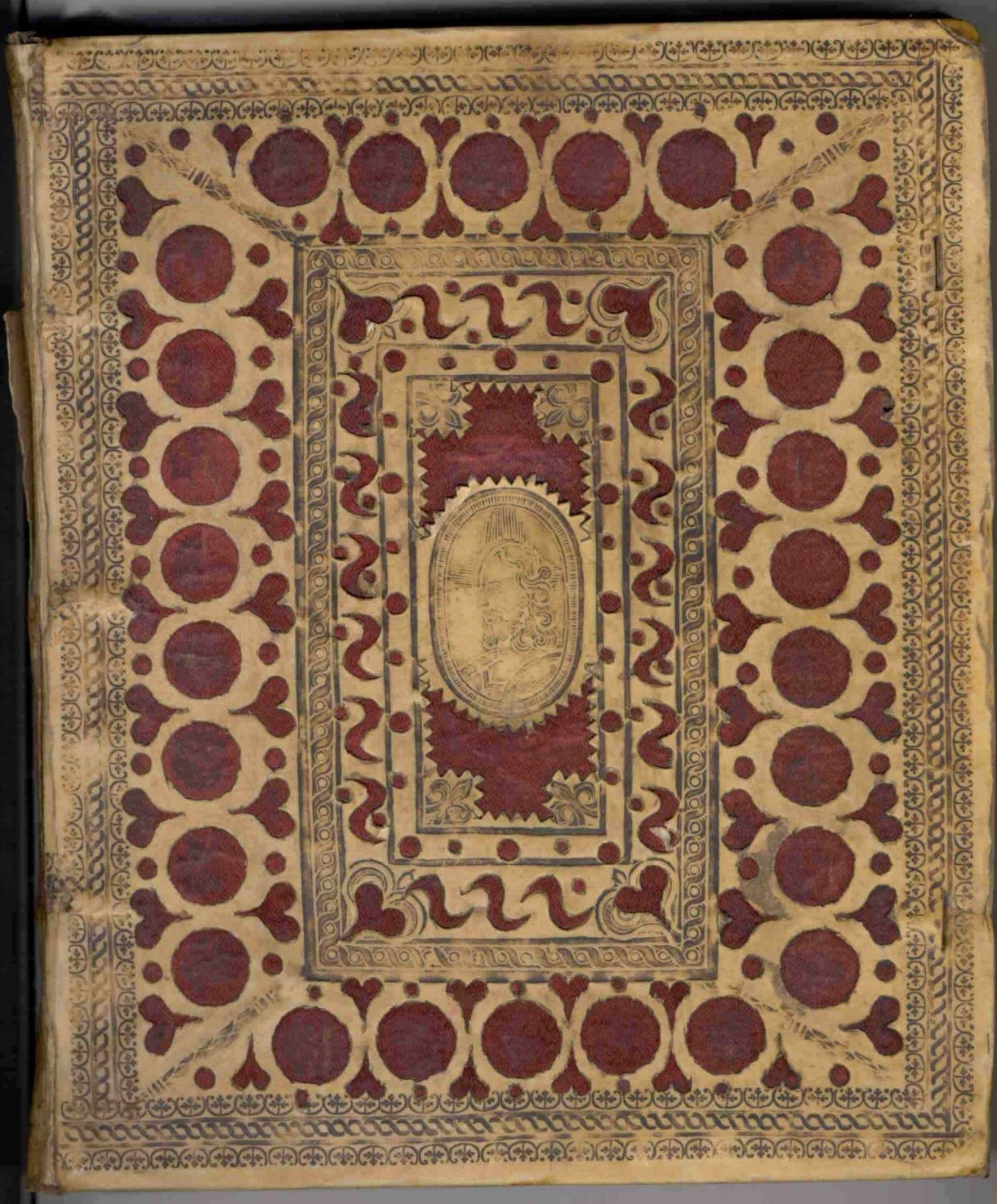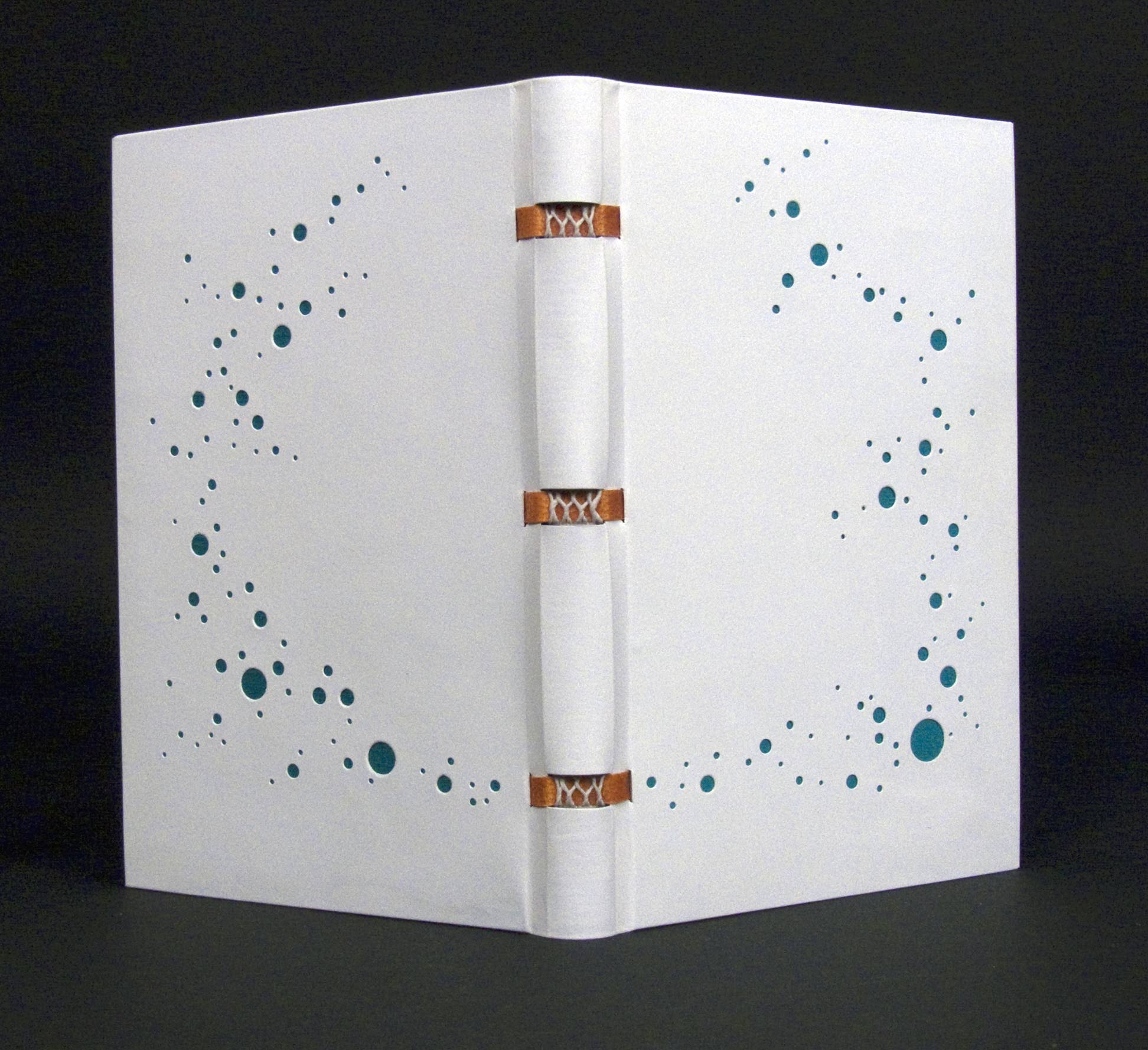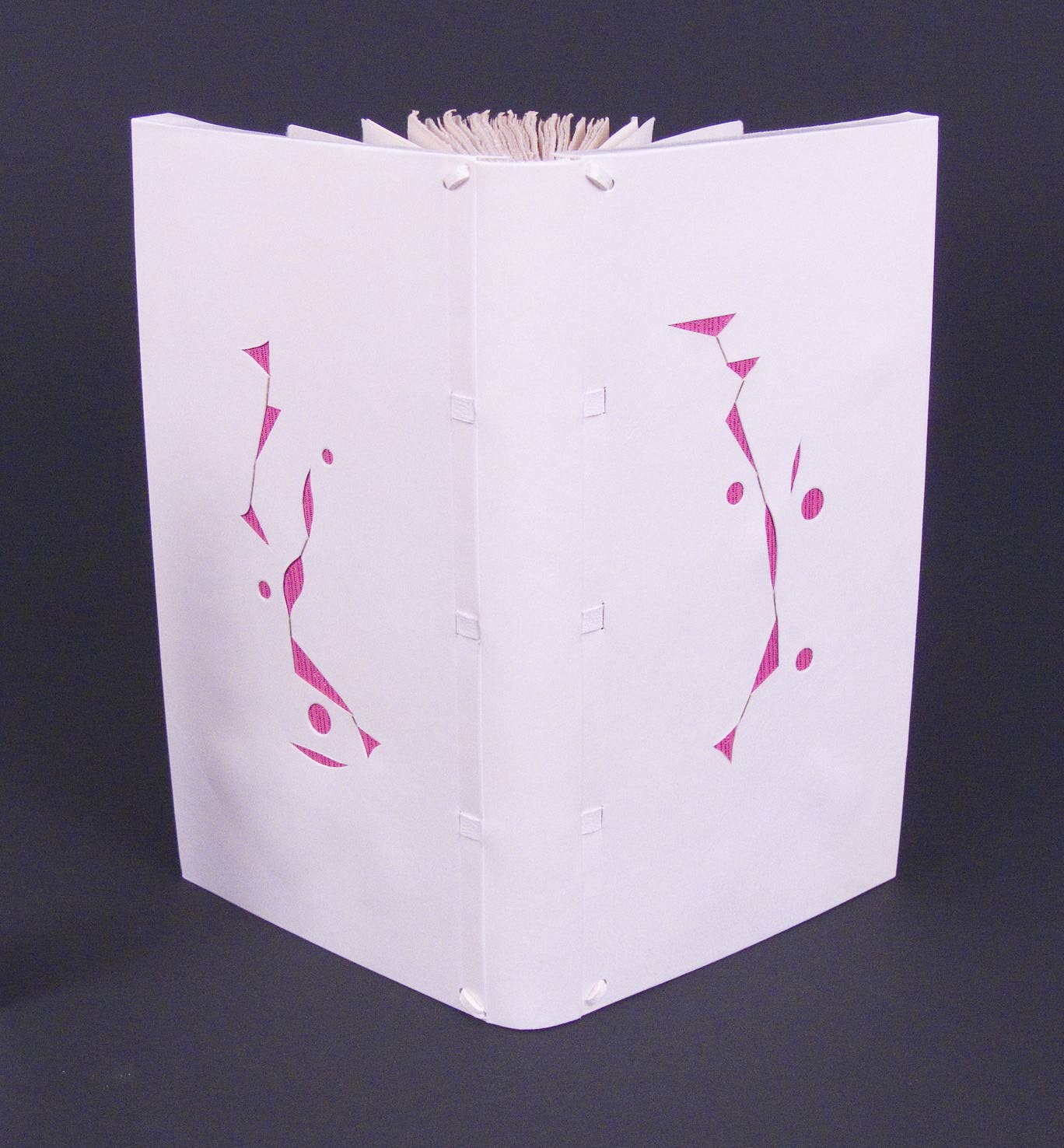by James Reid-Cunningham
Chief Conservator of the Boston Athenaeum
The last few years I have been researching 17th century pierced vellum bindings. This rather obscure decorative binding features a vellum cover with decorative designs cut out of the vellum, and boards lined with brightly colored silk, satin or leather. The puncturing of the vellum cover creates a vivid visual design. On historical exemplars, this design forms a symmetrical geometric pattern, sometimes approaching the appearance of lace.
I have only found a few historical examples. This may be because this was an extremely rare type of binding to begin with, or because library and dealer catalogs do not have a specific terminology for describing these bindings. I call them “pierced vellum bindings” only because the first one I encountered was described in this way. There may be other names used for these unique objects, so simply googling the term “pierced vellum binding” doesn’t return many results.
There are few citations in the literature about pierced vellum bindings. In Bookbinders at Work, Mirjam Foot notes that the only known description of this binding technique is found in Faust’s early 17th century manuscript describing binding procedures (Beschrijvinghe ende onderwijsinghe ter discreter ende vermaerder consten des boeckbinders handwerck / door Anshelmus Faust = Prescription et enseignement de la discrète et fameuse science de la manifacture des relieurs de livres / par Anshelmus Faust ; édité avec une introduction et des notes par Georges Colin, Bruxelles : Bibliotheca Wittockiana & Fl. Tulkens, 1987.)
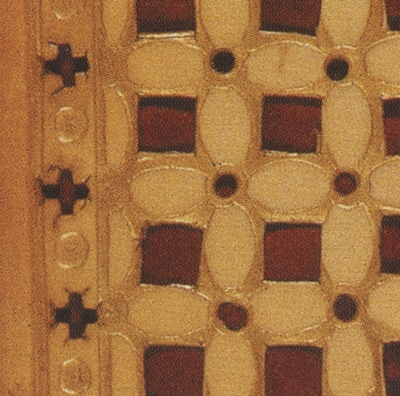
As shown in this detail, if the binding was tooled, the tooling was done first, followed by the punching of the holes before covering. The vellum was pierced with punches similar to those used by leatherworkers, although larger openings in the skin were simply cut with a knife. All of the decoration was done before covering.
Faust states that after the piercing, the vellum was glued and the cloth-lined boards were inserted into the case. Historical examples can appear as though they are limp case bindings with boards loosely inserted in the covers before the vellum turn-ins were pasted down. The limp appearance may result from the adhesive having given way over time. Sewing supports of alum-tawed leather or vellum were all laced into the case. Some have structural endbands with the cores laced into the case.
One reason for the rarity of these bindings is that they are extremely time-consuming to produce. This is also a very unforgiving decorative scheme; even a single mistake in cutting or punching the holes will result in ruining the cover. It is also extremely challenging to glue out the pierced vellum without ending up with the adhesive migrating into the openings and staining the cloth. One wonders if, after a short period of experimentation, this style of binding was abandoned simply because of the difficulty of turning a profit producing such labor-intensive bindings.
I have taught two courses in this binding style, one utilizing limp boards (with the vellum adhered to the boards only at the turn-ins), and one utilizing a modification of the modern German vellum over boards construction featuring “floating” boards. Here are examples of my own pierced vellum design bindings:
The only other contemporary binder I know of who is working in pierced vellum is Lester Capon, president of the Designer Bookbinders. Lester’s bindings have stiff boards, with the design cut into the vellum before it is pasted to the boards. The color is either leather or pigment.
I am very interested in discovering any other historical examples of this decorative technique. If you know of any collections containing pierced vellum bindings, or if you know of any technical descriptions of this binding in a historical manual, please email me at reid-cunningham@bostonathenaeum.org.
